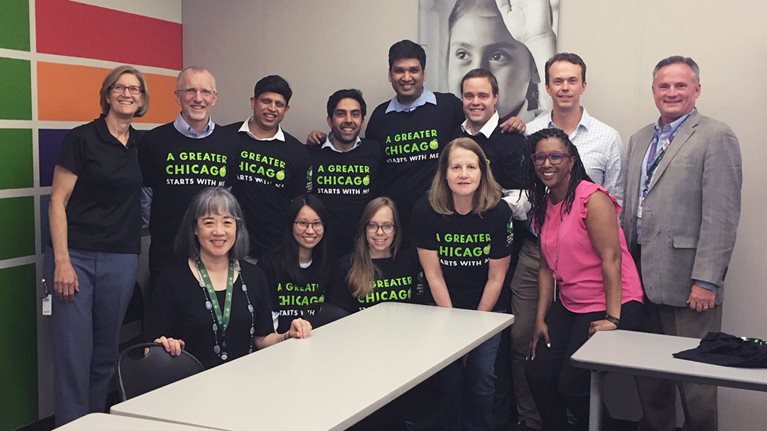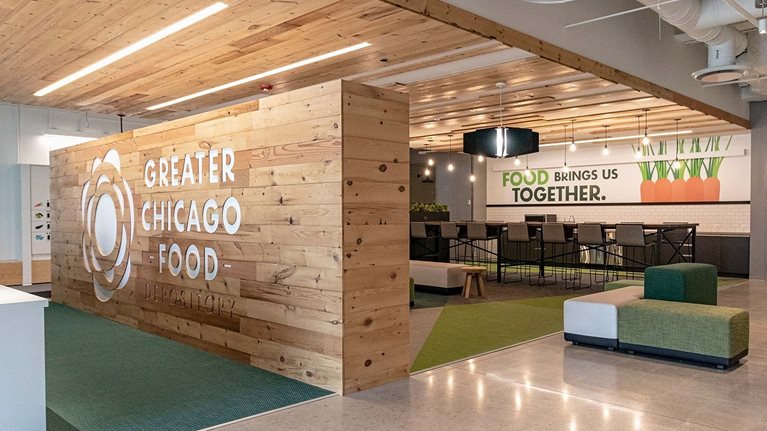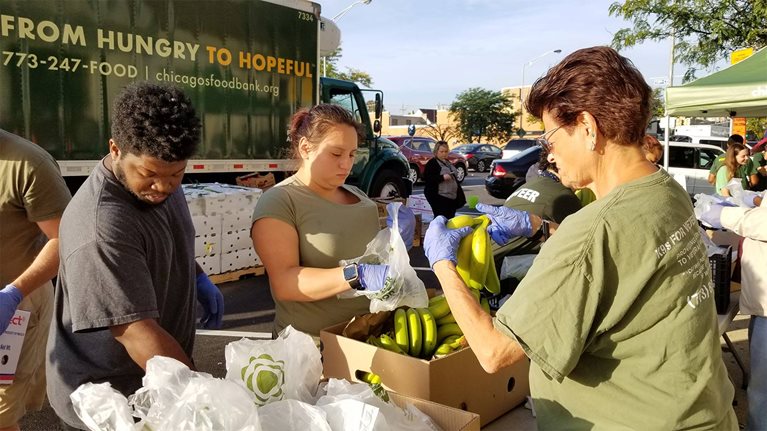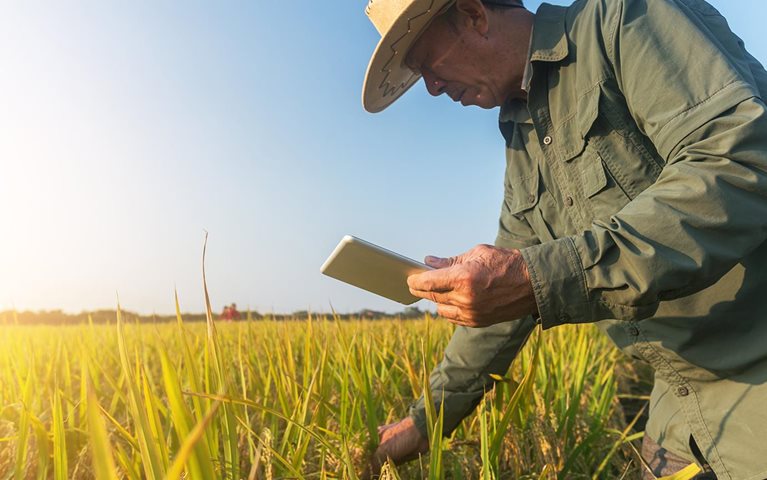At this moment, all across Chicago’s Cook County, more than 630,000 people don’t know when or where they might get their next meal. Food insecurity, a situation where people don’t have reliable access to adequate amounts of nutritious food, is more prevalent there than many realize.
The Greater Chicago Food Depository has been committed to putting an end to that condition for more than 40 years. Serving more than 800,000 people across the second most populous county in the US, the food bank works with over 700 partners, including food pantries, soup kitchens, and shelters that distribute food to underserved areas.
But ensuring equitable distribution is tricky; not all communities have equal needs. So the organization asked our firm for help.
Led by Roberto Uchoa, a McKinsey senior partner in our Chicago office, a team of McKinsey volunteers began looking at the organization’s strategy. They learned the food bank managed data tracking the 74 million pounds of food it distributed annually, but the group lacked the analytical tools it needed to fully leverage partner organizations’ assets and skills.

Back row, from the Greater Chicago Food Depository: Jill Zimmerman, Andy Seikel, Andrew Lutsey, Dennis James. From McKinsey: Nikhilesh Nukala, Raghav Sharma, Rajat Goel, Jason Reynolds
Front row, from the Greater Chicago Food Depository: Joan Chow, Sheila Creghin, Nicole Robinson. From McKinsey: Huilin Zeng, Haley Tiu
This data, the organization felt, was difficult to manage and incomplete. “Of Chicago’s 77 neighborhoods, we’ve known that 10 to 15 consistently show the highest rates of poverty and unemployment along with the lowest life expectancies,” says Nicole Robinson, vice president of community impact at the Greater Chicago Food Depository.
“We’ve always understood that hunger is a symptom of poverty,” Nicole adds. “But we’ve historically not had the depth of insight we needed to inform our strategies so that the most vulnerable communities can become stable through access to nutritious food, employment, and everything in between.”
A critical revelation
The McKinsey team began by working across the organization to collect and organize the vast amounts of community data the food depository had—but had never used—to build a food equity index. It included metrics like the number of children served, quality of food, and waste produced.
“We then used the index to build a tracking dashboard that shows how areas rank in terms of highest and lowest needs and which ones to prioritize,” explains Raghav Sharma, a McKinsey engagement manager.
Roberto describes how the index revealed opportunities to improve the equality of food distribution across neighborhoods. It also highlighted areas where the organization had under-realized opportunities to develop distribution partners, like churches and soup kitchens.

“With hard numbers to back it up, we could help them see that food had actually been disproportionately allocated to some neighborhoods whereas other communities required a greater food distribution infrastructure,” explains Roberto.
The revelation was critical for the organization. “It was a classic situation of not knowing what we don’t know,” says Andrew Lutsey, vice president of strategic initiatives. “We knew our data systems could be better, but we didn’t know how to make them better or what the best practices were.”
But there was more. What the food equity index also revealed is the immense complexity behind food insecurity and the relationship between food and certain social indicators, like education and job opportunities.
“The index reinforced for us that the right answer here is not a one-size-fits-all model,” says Sheila Creghin, vice president of operations. “There are nuances to each of the neighborhoods we serve, and demographics play a large role.”
More equitable food allocations
These insights are also helping the organization make progress in other areas. Public policy and advocacy play critical roles in helping the food depository carry out its mission.
“We can now point to a fact-based tool when seeking additional government funding for programs like the Supplemental Nutrition Assistance Program, for example,” says Jill Zimmerman, vice president of development. “We know what programs need greater support, and we can now have clear targets in place to get there.”

The McKinsey team is helping them hit those targets. After co-creating a blueprint for new digital tools, which include a food optimization model, the Greater Chicago Food Depository will deploy the approach across its database server to manage the distribution of fresh produce.
Based on an algorithm, the model will let the organization know how much food to give each partner location within the community. From there, the organization can coordinate logistics, like sending more vans to an underserved agency to ensure the food it needs arrives fresh.
Insight into community partners
While the food depository has partnered with its community organizations to distribute food to the people it serves, the group has historically collected very little information from them aside from what their orders are. “We saw this gap as a huge opportunity,” says Raghav.
Through data analysis, the McKinsey team designed a customer relationship management system. “Once implemented, this will help us get more information across different systems and create more customized programs based on our partners’ needs,” says Nicole.
For example, 70 percent of the organization’s partners are volunteer-based. Knowing where and when there are volunteer shortages will allow them to mobilize more people when needed.
“Having this database democratizes all this information about our partners,” says Kate Maehr, executive director and CEO of the Greater Chicago Food Depository. “Entire teams are now empowered to be part of a strategy for improving our communities.”
Ultimately, we hope to equip the organization with all the tools it needs to continue delivering on its mission—of moving people out of poverty to lead healthy and productive lives.
Roberto Uchoa McKinsey senior partner
While the project was officially completed over the summer, in many ways the work still continues. Not long ago, a group of QuantumBlack colleagues held a hackathon in our Chicago office to explore options for other customized solutions. In addition, the McKinsey team hosts monthly tutorials on analytics, supply chain, and project management.
“We see our work with the Greater Chicago Food Depository as just the beginning of a long relationship,” says Roberto. “Ultimately, we hope to equip the organization with all the tools it needs to continue delivering on its mission—of moving people out of poverty to lead healthy and productive lives.”
